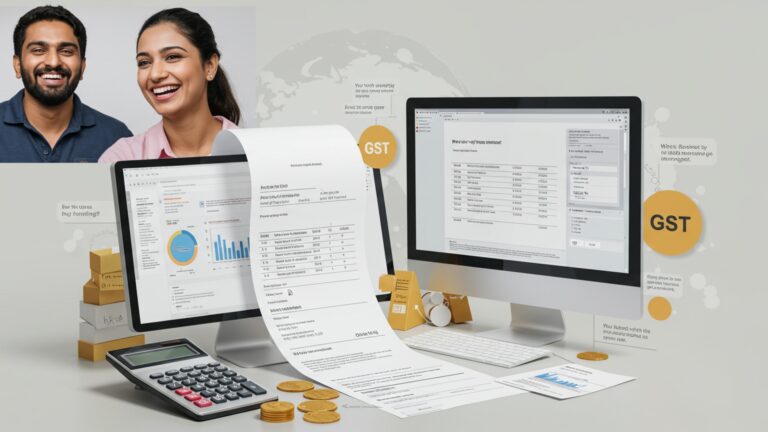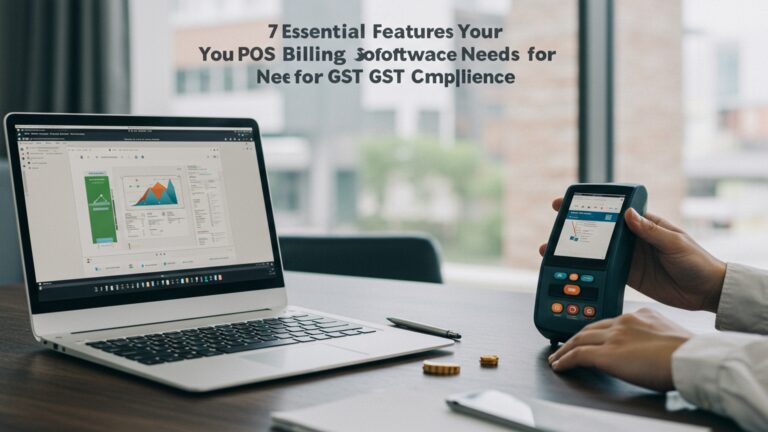Learn 7 Essential GST Invoicing Tips for Small Business Success
Navigating Goods and Services Tax compliance demands precision from small businesses, where even minor invoicing discrepancies can trigger significant financial and operational hurdles. Inaccurate invoices not only invite scrutiny from tax authorities but also disrupt crucial cash flow, especially with the recent push towards mandatory e-invoicing and real-time reporting in many jurisdictions. Mastering essential GST invoicing tips becomes paramount for ensuring audit resilience, optimizing financial processes. maintaining a robust business reputation. Proactive adherence to best practices transforms a regulatory burden into a strategic advantage, safeguarding profitability and growth amidst evolving compliance landscapes.

Understanding the Fundamentals of a GST Invoice
For any small business operating under the Goods and Services Tax (GST) regime, issuing correct invoices isn’t just a formality; it’s a legal necessity and a cornerstone of financial health. A GST invoice is more than just a bill for services or goods; it’s a critical document that allows both the supplier and the recipient to claim input tax credit (ITC) and ensures compliance with tax laws. Without a properly formatted and detailed invoice, your business, or your clients, could face significant issues, including penalties, delayed payments. audit complications. Getting your GST invoicing tips right from the start is crucial for long-term success.
Let’s clarify some fundamental terms:
- GSTIN (Goods and Services Tax Identification Number)
- Tax Invoice
- Bill of Supply
This is a 15-digit unique identification number issued to every registered taxpayer. It’s essential for all GST-related transactions.
Issued when a registered person supplies taxable goods or services to another registered person or to an unregistered person (B2C) where the value exceeds a certain threshold. It allows the recipient to claim ITC.
Issued by a registered person who is supplying exempt goods/services, or by a person registered under the composition scheme. A Bill of Supply does not allow the recipient to claim ITC.
Understanding these basics is the first step in mastering effective GST invoicing tips.
Accuracy is Paramount: Get Your Details Right
One of the most critical aspects of GST invoicing is ensuring absolute accuracy in all details. Errors, no matter how minor, can lead to discrepancies, rejection of ITC claims. potential scrutiny from tax authorities. This tip is fundamental to all GST invoicing tips.
- Supplier Details
- Recipient Details
- Invoice Number and Date
- HSN/SAC Codes
- HSN (Harmonized System of Nomenclature) Code
- SAC (Services Accounting Code)
- Taxable Value, GST Rate. Amount
Your business’s legal name, address. GSTIN must be prominently displayed. A classic case study involves a small IT consulting firm, “Tech Solutions,” which initially used a shortened business name, leading to their clients’ ITC claims being questioned until they rectified their invoices to show their full registered name and GSTIN.
For B2B transactions, the recipient’s legal name, address. GSTIN are mandatory. If the recipient is unregistered (B2C), their name and address are generally sufficient. for high-value B2C transactions, additional details might be required as per specific rules.
Every invoice must have a unique, sequential invoice number and the date of issue. We’ll delve deeper into numbering shortly.
A globally recognized system for classifying goods.
Used for classifying services.
These codes are crucial for accurate tax calculation and reporting. The number of digits required (2, 4, or 6) depends on your business’s turnover. For example, a small electronics retailer might use a 6-digit HSN code for ‘Smartphones’, while a web design agency would use a specific SAC code for ‘IT and Software Services’. Incorrect HSN/SAC codes are a common error that can invalidate an invoice.
Clearly state the value of goods/services, the applicable GST rate (e. g. , 5%, 12%, 18%, 28%). the breakdown of CGST, SGST/UTGST. IGST. The total invoice value should also be clearly stated.
Double-checking these details before issuing an invoice can save immense headaches later on. It’s one of the most vital GST invoicing tips to adopt.
Mastering the Art of Invoice Numbering
Proper invoice numbering is a non-negotiable aspect of GST compliance. Each tax invoice must bear a unique, sequential serial number. This isn’t just for organizational purposes; it’s a legal requirement that facilitates easy tracking, prevents duplication. aids in audits. Here are key GST invoicing tips for numbering:
- Uniqueness
- Sequentiality
Every invoice you issue must have a distinct number. You cannot reuse invoice numbers, even if previous invoices were cancelled.
The numbers must follow a continuous sequence for a financial year. For instance, if your first invoice is
TS/FY23-24/001
, the next should be
TS/FY23-24/002
. Breaking this sequence can raise red flags during an audit.
While there’s flexibility in the format, it should ideally include:
- Prefixes (e. g. , related to your business name, financial year).
- Numeric part (e. g. , 001, 002).
- Suffixes (optional).
A common format might look like
[Your Business Code]/[Financial Year]/[Serial Number]
. For example,
ABC/2023-24/00123
. The Goods and Services Tax Network (GSTN) mandates that the invoice number must be unique for every financial year.
Ensure there are no missing numbers in your sequence. If an invoice is cancelled, it should still be recorded in your system with its unique number, marked as “cancelled.” This transparency is a key part of good GST invoicing tips.
A small bakery, “Sweet Treats,” started manually numbering invoices. After a few months, they discovered they had accidentally duplicated an invoice number due to human error. This necessitated a tedious reconciliation process and corrections in their GST returns. Switching to an automated system with sequential numbering features resolved this issue entirely.
Differentiating Between Tax Invoice and Bill of Supply
Knowing when to issue a Tax Invoice versus a Bill of Supply is fundamental to GST compliance. Misunderstanding this can lead to incorrect tax reporting and impact your clients’ ability to claim ITC. This is one of the most overlooked GST invoicing tips.
- Tax Invoice
- Issued by a registered taxable person.
- For the supply of taxable goods or services.
- Mandatory for B2B transactions, allowing the recipient to claim ITC.
- Includes GST details (CGST, SGST/UTGST, IGST).
- Use Case
- Bill of Supply
- Issued by a registered person supplying exempt goods/services.
- Issued by a person registered under the GST Composition Scheme.
- Does NOT include GST details, as no tax is charged.
- The recipient cannot claim ITC based on a Bill of Supply.
- Use Case
A registered graphic designer charges a registered marketing agency for logo design services. The designer must issue a Tax Invoice, as the marketing agency will want to claim ITC on the GST paid.
A small grocery store registered under the Composition Scheme sells daily essentials. They will issue a Bill of Supply to their customers because they cannot charge GST and thus cannot pass on ITC. Similarly, a tuition center providing educational services (often exempt) would issue a Bill of Supply.
It’s crucial to correctly identify your business type and the nature of your supply to issue the appropriate document. Failure to do so can lead to non-compliance penalties.
Leveraging Technology: Embrace Accounting Software
In today’s digital age, relying solely on manual invoicing methods is inefficient, prone to errors. can severely hinder your business’s growth. Embracing accounting or invoicing software is one of the most impactful GST invoicing tips for small businesses.
- Automation and Error Reduction
- Ease of Compliance
- Time and Cost Savings
- Record Keeping and Accessibility
- Professionalism
Software automates calculations of GST, HSN/SAC codes. ensures sequential numbering. This drastically reduces human error, a common pitfall of manual processes.
Most modern software is designed to be GST-compliant, generating invoices in the correct format and often helping prepare GST returns (GSTR-1, GSTR-3B) directly or indirectly. This streamlines the filing process significantly.
Automating invoicing frees up valuable time that can be redirected to core business activities. While there’s an initial investment, the long-term savings in error correction, compliance. efficiency often outweigh the cost.
Digital invoices are easy to store, retrieve. backup. This is invaluable during audits or when you need to access historical data quickly.
Professionally generated invoices enhance your brand image and instill confidence in your clients.
Comparison: Manual vs. Automated Invoicing
| Feature | Manual Invoicing (e. g. , Excel/Word) | Automated Invoicing (Software) |
|---|---|---|
| Error Rate | High (manual calculations, data entry) | Low (automated calculations, data validation) |
| Time Taken | Significant (data entry, calculations, formatting) | Minimal (template-based, auto-populate) |
| Compliance | Requires constant manual updates and checks | Built-in compliance features, auto-updates for rule changes |
| Record Keeping | Disjointed, prone to loss, difficult to search | Centralized, secure, searchable, easy backups |
| GST Return Filing | Requires manual data compilation | Integrates with GSTN, simplifies GSTR filing |
| Professionalism | Can vary greatly depending on template skills | Consistent, professional output |
Many small businesses start with free online tools or basic accounting software. The key is to choose a solution that scales with your business needs and keeps your GST invoicing tips aligned with best practices.
Maintaining Diligent Records and Backups
Issuing correct invoices is only half the battle; the other half is meticulously maintaining those records. Proper record-keeping is not just good business practice; it’s a legal mandate under GST law. This is a foundational element of effective GST invoicing tips.
- Legal Requirement
- Audit Readiness
- Business Insights
- Backup Strategy
- Digital Copies
- Cloud Storage
- Regular Backups
- Physical Copies
As per GST regulations, all registered businesses must maintain records of their invoices, credit notes, debit notes. other related documents for a minimum of 72 months (six years) from the due date of filing the annual return for that financial year.
Tax authorities can request these records at any time. Having organized and easily accessible records can make an audit a smooth process, preventing penalties and unnecessary stress. Imagine a scenario where a small textile business, “Fabric Fables,” was audited. Because they had diligently maintained digital copies of all their GST invoices, categorized by financial year and client, they could provide all requested documents within hours, leading to a quick and favorable audit outcome.
Beyond compliance, well-maintained invoicing records provide valuable insights into your sales patterns, customer behavior. financial performance. This data can inform strategic business decisions.
Always keep digital copies of all invoices.
Utilize cloud services (e. g. , Google Drive, Dropbox, dedicated accounting software cloud storage) for off-site backups to protect against local hardware failures or disasters.
Implement a routine for regular backups (daily/weekly, depending on transaction volume).
While not strictly necessary for all, some businesses prefer to keep physical copies of high-value invoices or specific types of documents.
Neglecting record-keeping can be far more damaging than issuing an incorrect invoice, as it implies a lack of transparency and compliance. A robust system for record maintenance is among the most essential GST invoicing tips.
Staying Updated with GST Regulations
The GST framework is dynamic, with the government periodically introducing amendments, clarifications. new rules. For small businesses, staying abreast of these changes is paramount to maintaining compliance and avoiding penalties. This continuous learning is a vital part of effective GST invoicing tips.
- Regular Policy Changes
- Impact on Invoicing
- Sources for Updates
- Official GST Portal
- Professional Advisors
- Reputable News Sources and Blogs
- Accounting Software Updates
- Proactive Learning
GST Council meetings often result in changes to rates, procedural requirements, or rules related to invoicing, ITC. returns. For example, the threshold for mandatory e-invoicing has been progressively lowered, impacting more small businesses.
A change in GST rates, an update to HSN/SAC code requirements, or new rules for specific types of transactions (e. g. , exports, SEZ supplies) directly impacts how you generate your invoices. Failure to incorporate these changes can lead to non-compliant invoices.
The GST India website is the most authoritative source for all notifications, circulars. announcements.
Engage with chartered accountants or tax consultants who specialize in GST. They can provide timely updates and personalized advice.
Follow financial news outlets, tax blogs. industry-specific publications that cover GST updates. Ensure the sources are credible.
If you use accounting software, ensure it is regularly updated by the provider to reflect the latest GST rules.
Dedicate time, perhaps monthly or quarterly, to review any new notifications or changes relevant to your business. A small manufacturing unit, “Precision Parts,” faced a challenge when the GST rate for one of their key products changed. Because their finance manager proactively subscribed to GST updates and attended webinars, they were able to implement the new rate in their invoicing system well before the deadline, avoiding any disruption or non-compliance.
Staying informed isn’t just about avoiding penalties; it’s about optimizing your tax strategy and ensuring seamless business operations. Consider this a living, breathing component of your overall GST invoicing tips strategy.
Conclusion
Mastering GST invoicing isn’t merely about compliance; it’s a strategic pillar for your small business’s financial health and growth. By diligently integrating these seven essential tips – from ensuring accurate HSN/SAC codes to staying updated on dynamic QR code mandates for B2C transactions – you’re building a robust foundation. My personal experience has shown that embracing a reliable billing software isn’t just a convenience; it’s a necessity. It automates much of the manual effort, significantly reducing common errors and simplifying reconciliation, especially with the government’s ongoing push for e-invoicing expansion. Don’t view GST compliance as a daunting task. rather as an ongoing opportunity to streamline your operations and enhance transparency. A well-managed invoicing process ensures timely input tax credit claims, fosters stronger customer trust. ultimately, empowers your business to thrive in India’s dynamic economic landscape. Continue to refine your approach, because precision in invoicing directly translates to peace of mind and sustained success.
More Articles
Discover 7 Simple Ways to Prevent Billing Errors and Save Your Business Money
How to Choose the Best Billing and POS Software for Your Business
Discover How POS Billing Software Transforms Your Business Operations
Master Your GST Invoicing with 7 Essential Tips and Best Practices
FAQs
Why is it super vital to get my GST invoices right every time?
Getting your GST invoices spot-on is crucial for several reasons. It ensures you stay compliant with tax regulations, avoids potential penalties, helps you correctly claim your input tax credit. allows your customers to do the same. Errors can lead to headaches with tax authorities down the line.
What are the absolute must-have details on a GST invoice?
Every GST invoice needs your business’s name, address. GSTIN, the customer’s name, address. GSTIN (if they’re registered), a unique invoice number, the date of issue, a clear description of goods or services, their value, the applicable GST rates (CGST, SGST, IGST, UTGST). the total tax amount. Don’t forget the total value of the supply!
Do I always issue a ‘Tax Invoice’, or are there other types I should know about?
Not always! A ‘Tax Invoice’ is for taxable supplies where you charge GST. If you’re supplying exempt goods or services, or if you’re a composition dealer, you’ll issue a ‘Bill of Supply’ instead, as you don’t charge GST on those specific transactions.
How quickly do I actually need to send out my GST invoices?
Timeliness matters a lot! Generally, for goods, it should be before or at the time of removal/delivery. For services, it’s typically within 30 days of providing the service (or 45 days for specific entities like banks/NBFCs). Missing these deadlines can lead to compliance issues.
Is using accounting software for GST invoicing really worth it for a small business?
Absolutely! Investing in good accounting software or a dedicated GST invoicing tool is a game-changer. It automates calculations, ensures all mandatory fields are included, drastically reduces errors, simplifies record-keeping. makes GST return filing much smoother. It saves you time and stress.
How can I be sure I’m applying the correct GST rates to my products or services?
Staying updated is key. You should regularly check official GST Council notifications and refer to the HSN (Harmonized System of Nomenclature) codes for goods and SAC (Services Accounting Code) for services. Rates can change, so a quick check ensures you’re not over- or undercharging GST.
Why is keeping good records of all my invoices so vital?
Keeping meticulous records of all your GST invoices, both issued and received, is non-negotiable. It’s vital for audit purposes, proving your tax liability or input tax credit claims. resolving any potential disputes with customers or the tax department. It’s also a legal requirement to maintain these records for a specified period.






